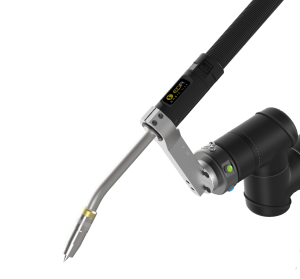ARC WELDING WITH COBOTS. It is not collaborative, but it makes sense!
Collaborative robots are already a reality for several applications. The word “collaborative” has certainly been misused for some applications with commercial intentions since “collaborative” means that the robot can work side by side with a worker in a safe way as if it were another colleague in the line, but when it comes to arc welding, it is clear that it is not a collaborative application. Every welding cell has to be closed and has to comply with an estipulated number of safety issues to ensure the integrity of the welder and their co-workers. Welding with a cobot is not different. You cannot have a welding power source operating near a worker. It needs to be closed and has to be used as if it were an industrial robot.
That said, there are a lot of advantages that you can get from using a cobot for your MIG/TIG welding applications if your production needs meet some of these characteristics:
- Low-medium volumes/pieces
- Piece repetitiveness in time
- Small size pieces
Having those needs it may make perfect sense to invest in cobot welding units.
- Much easier to program than an industrial robot.
- Much higher autonomy for the user.
- No dependence on the robot manufacturer.
- Robotic quality and repetitiveness.
- Very intuitive and easy to teach.
- Very flexible as you can change application and relocate the cobot very easily in other locations.
- It is an easy and cheap start in automation applications for small-medium size companies.
To sum up, a cobot can be a perfect fit for companies that want to start automating applications and learning Robotics with full autonomy and operability.
José Luis G.
Share this article!
Contact the author for more info!

